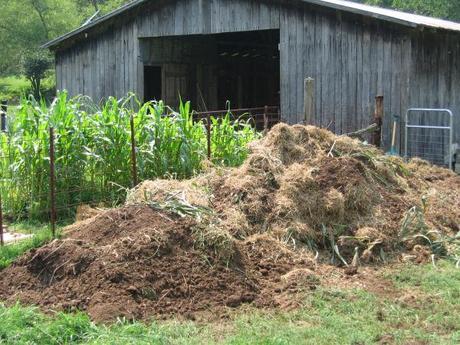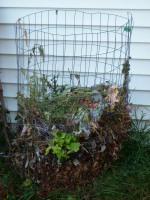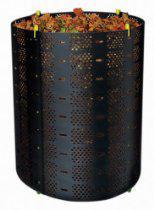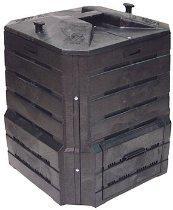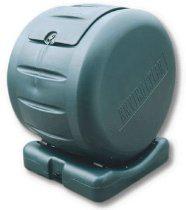So in Composting For Dummies Part 1 we covered what composting is, why it’s beneficial to you and the environment and what it’s used for. Now let’s get into the how’s of composting. Here’s a list of the ways in which you can compost and they’re pros and cons.
Simple Compost Pile – This is essentially just an area of land that is used just for composting. It’s just like it sounds, just a pile of compost. PROS: No setup, no tools needed, compost can just be scooped from the bottom of the pile. Plus it’s free. CONS: Animals can get to it easily. A fair amount of land is required, so that when it rains or when the wind blows, compost bits aren’t flying at your house, must be aerated* by hand.
Wire or Wood Fence Composter – This is essentially a length of fencing that is staked into the ground.
PROS: It doesn’t take long to make, and takes virtually no tools. Cheap.
CONS: Animals can get into it easily, because it’s not “contained” it can smell, needs to be manually aerated, must sit on open soil, need to dig out finished compost from the bottom of the pile.
Basic Compost Bin – This type is your basic no-frills compost bin usually made from plastic and can be as simple as a large garbage can with the bottom cut out of it and holes drilled into the top for air flow. The most common bin in this category is a large square bin with the bottom open that sits on top of the soil, that has air holes on the sides, and a sloped roof to allow for rain runoff and drainage. PROS: relatively easy setup and assembly, very simple to get started, can just lift door at bottom or tilt unit to get at finished compost.. Animals can’t get it easily. Relatively cheap. CONS: Tools needed to setup and manual aeration is needed on a regular basis, must sit on open soil.
Spinning Composter- (This is the type I have) – This is the fastest way to make your own compost, and requires the least amount of messing with it. This type usually consists of some type of drum with air holes that sits on legs or a base that allows it to literally spin. The spinning action adds oxygen and aids in decomposition PROS: Simple to use, you just dump in your compostable materials and let nature do it’s thing. Every now and then give the tumbler drum a spin and that’s it. Doesn’t have to be placed on grass or soil. Fits in a small space. CONS: At some point you need to stop adding compost to this bin, because it will be to heavy to turn and not enough air will be getting through.
Worm Bin – This bin is also called a
vermi composter and here’s how it works: Basically, the worms munch on the food in the compost bin, and their “castings” or worm poop, is basically what makes the soil from this type of composting so rich.The worms that are used are red earthworms, but not the same kind that you go fishing with. There are different bins and ways of working with worms, some are even DIY, but they all essentially work the same way.
PROS: nutrient dense soil is produced, and the worms are very efficient at, well, pooping
CONS: The worms don’t eat
everything so you need to be careful what and how you feed them. Pretty high-maintenance, because the worms are essentially your pets, (even though they’re working for you). Fruit flies are also a common problem with this type of bins. To harvest the compost, you need to dump the whole bin out, wat for the worms to burry themselves, and scoop out what you need. Oh and yeah, by the way, they’re
worms.
Hope that helps! Next, I’ll be talking about how to collect your food waste properly, and how to feed the bin. All of the composter shown here are available in the Savvy Shop Garden Section!
*Aeration – Allowing air to circulate through the compost pile so that it doesn’t get a clumpy and dry. Usually this is done with a pitchfork-like tool like [this one], or my tumbling.
- Do you compost? What method do you use?
References
Savvy Gardener
The Paupered Chef
Gaiam
Compost guide
